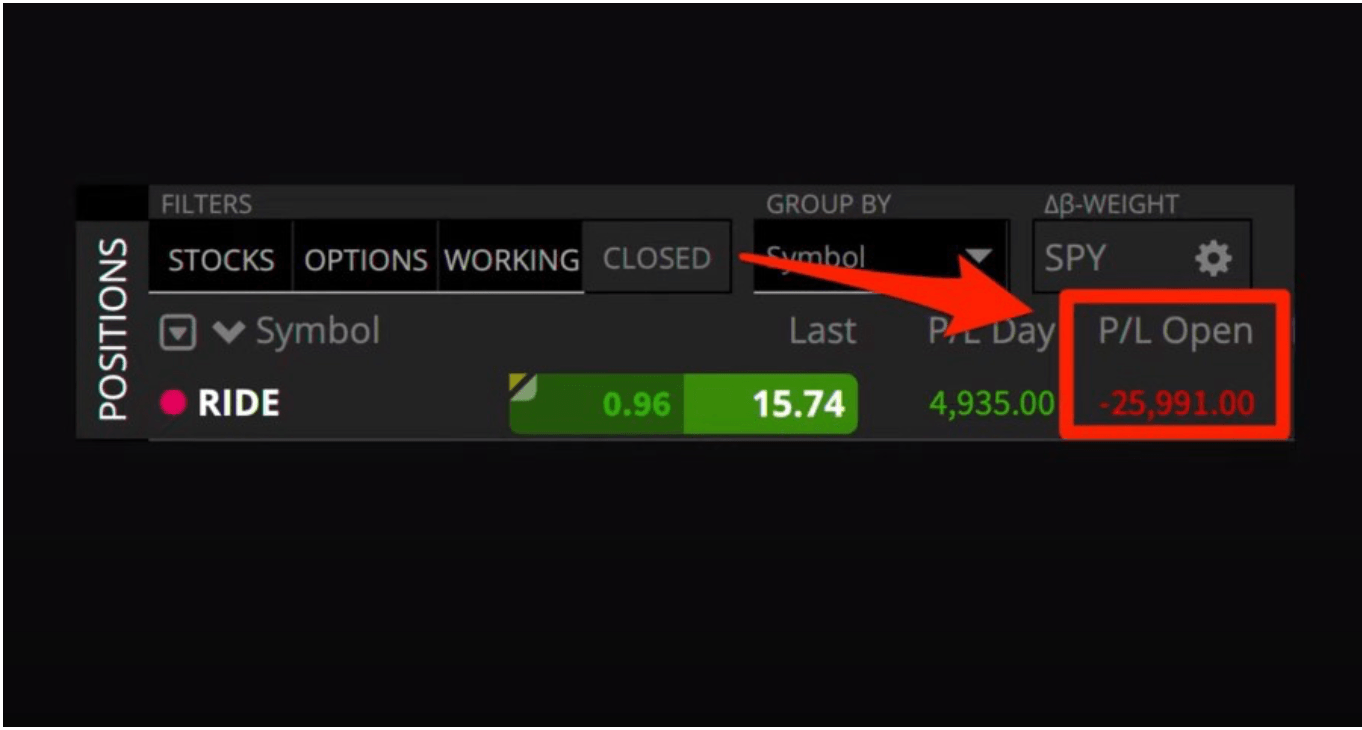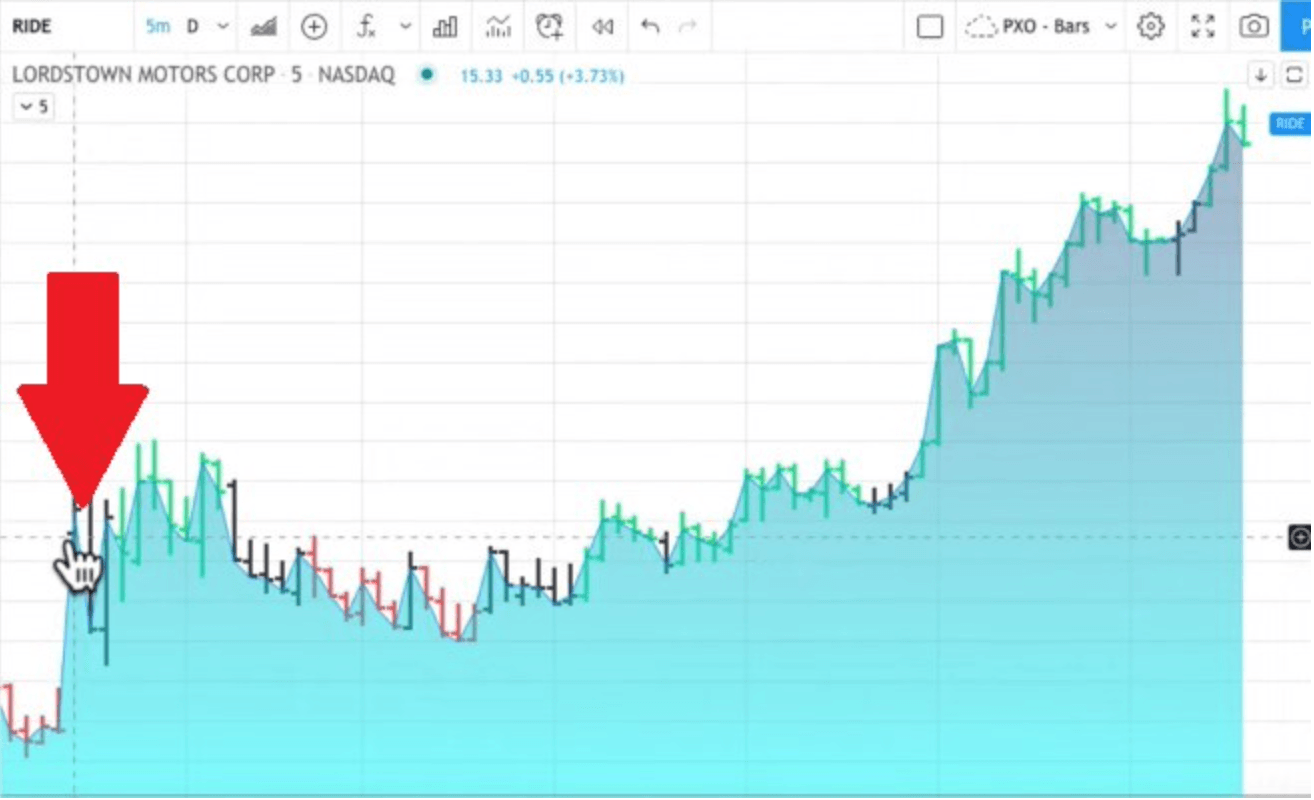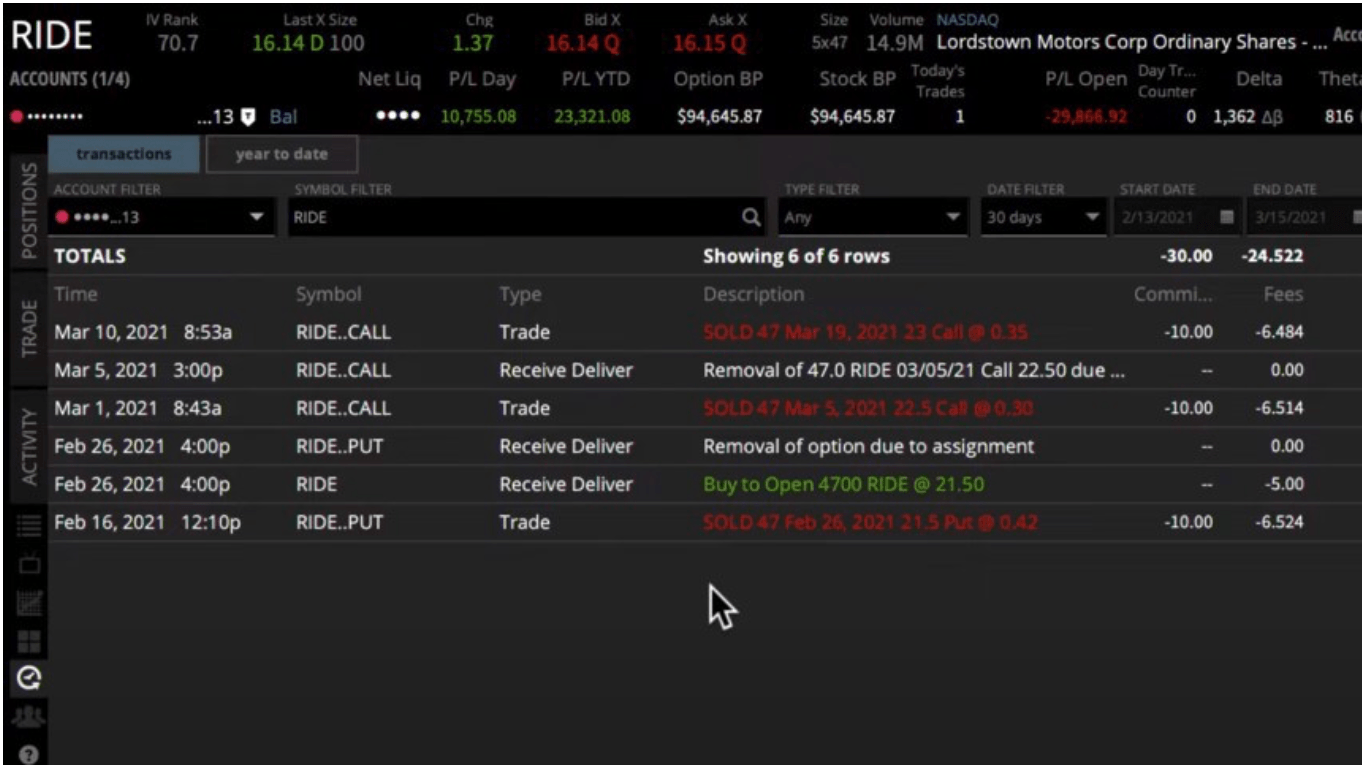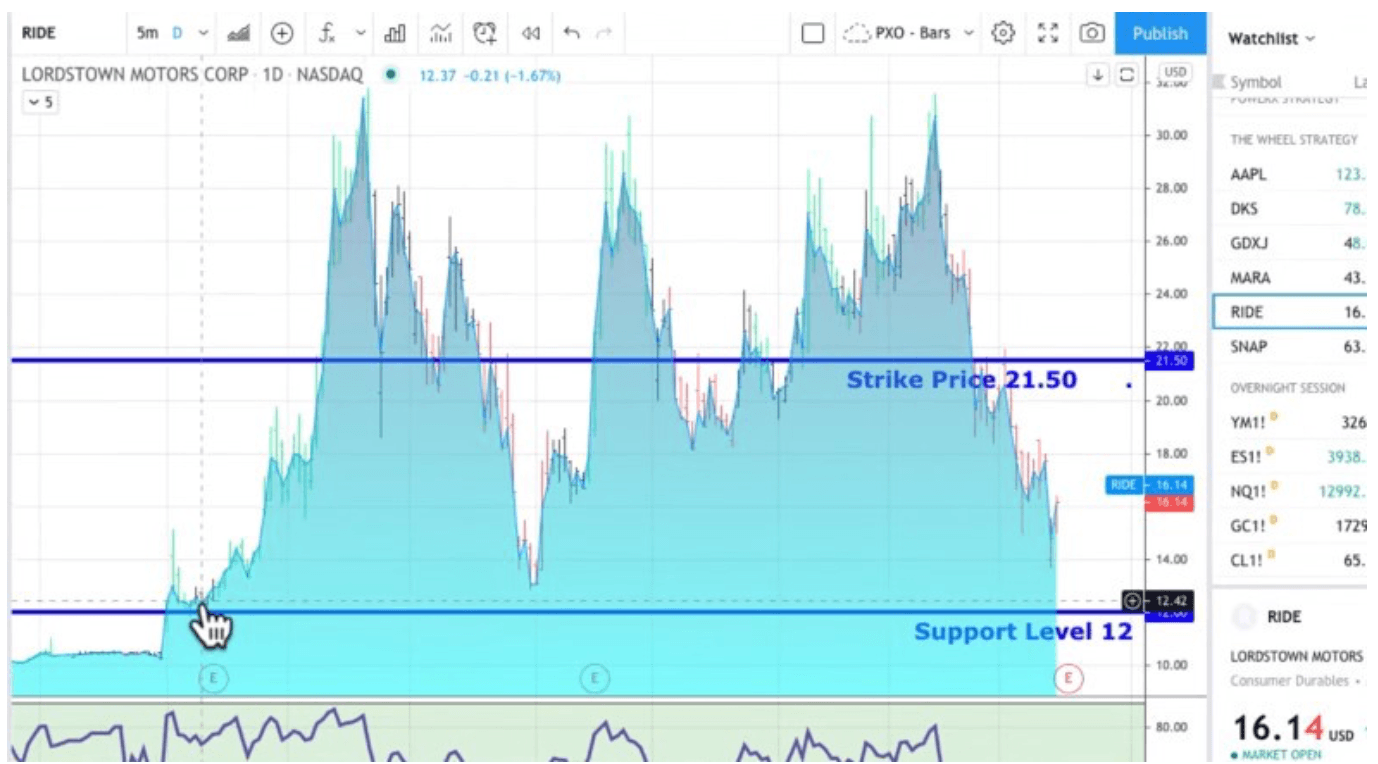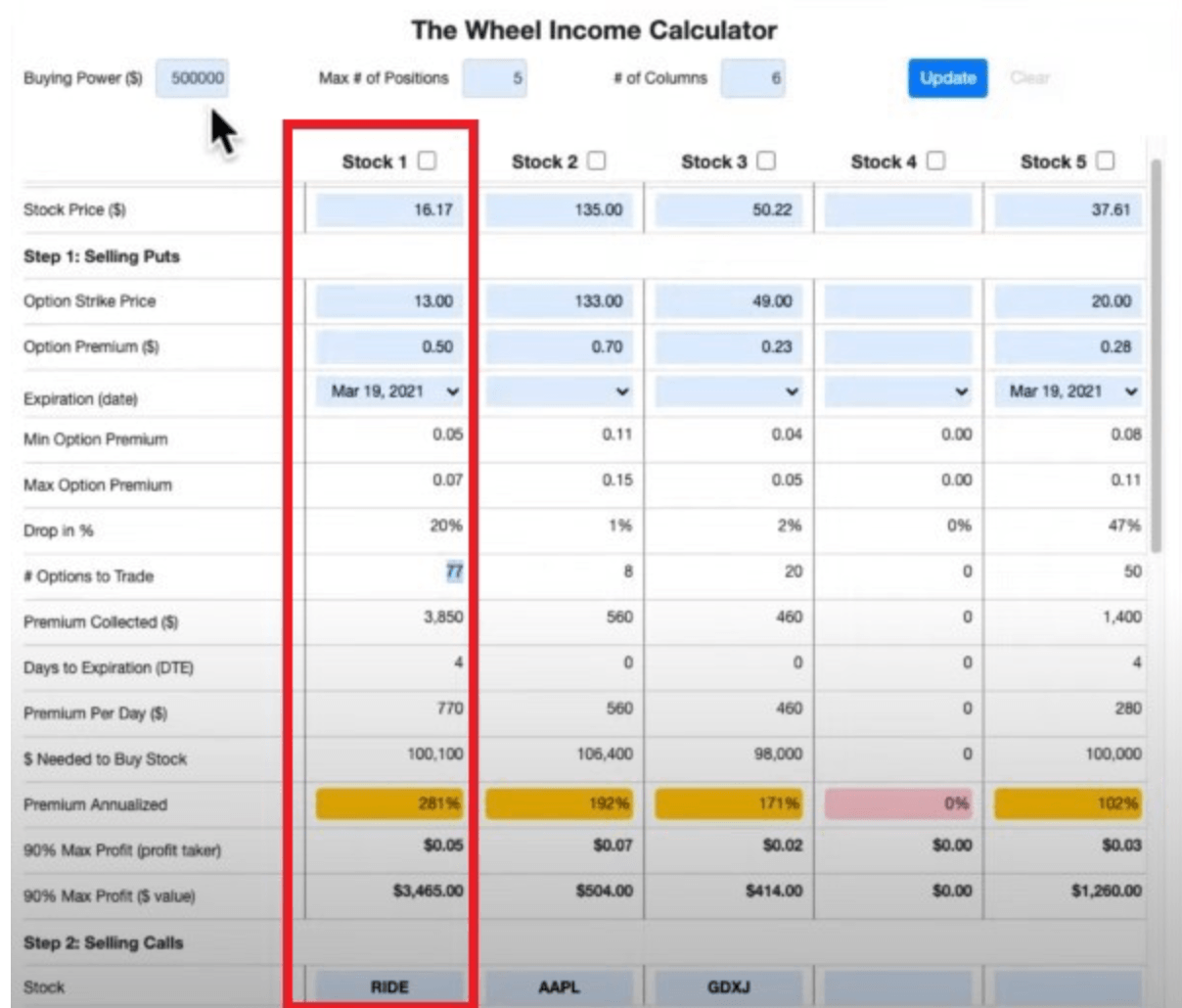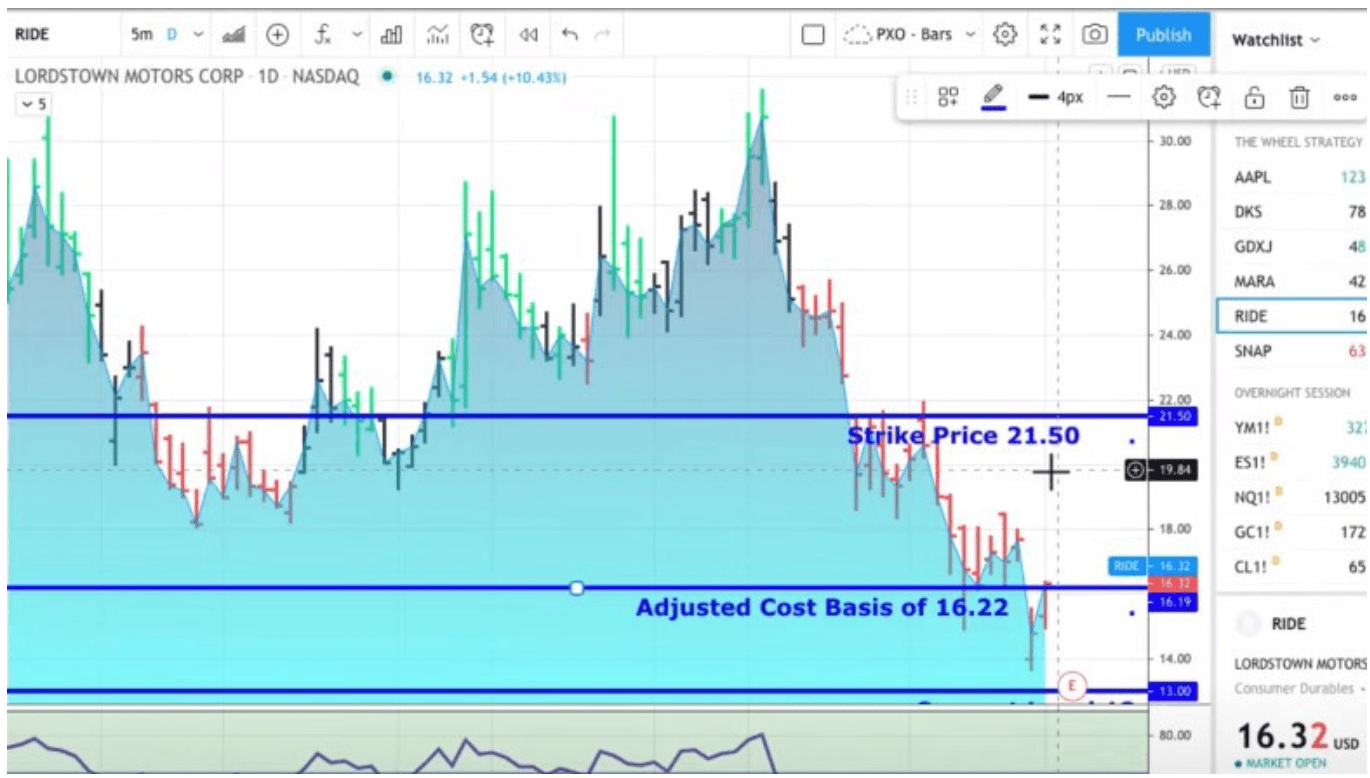I’m Markus Heitkoetter and I’ve been an active trader for over 20 years.
I often see people who start trading and expect their accounts to explode, based on promises and hype they see in ads and e-mails.
They start trading and realize it doesn’t work this way.
The purpose of these articles is to show you the trading strategies and tools that I personally use to trade my own account so that you can grow your own account systematically. Real money…real trades.
Today we’re going to talk about managing losing trades, because as you can see, right now (at the time of this writing on March 15th, 2021),
I have a losing trade of over $25,000 in my account. So today I want to show you how to manage losing trade.
In this article, we are going to talk about:
Number One How to manage losing trades.
Number Two we will talk about how to deal with losing trades.
Number Three how to fix losing trades.
Number Four we’ll talk about when should you get out of a losing trade.
Managing A Losing Trade
OK, so how to manage losing trades.
Nobody likes to talk about losing trades, right? But that’s what we do here. Those who know me, know I’m about real trades and real money. This includes when losing trades happen.
So what’s exactly happening with my trade with RIDE? Why is this trade in such bad shape?
A few days ago (as of March 15th, 2021), the Hindenburg Report came out with a report titled, “The Lordstown Motors mirage, fake orders, undisclosed production hurdles, and a prototype inferno.”
Hindenburg, are famous short-sellers, meaning that they are betting on a market, or on a stock, to go down. So, therefore, they are making a case of why they are taking a short position right here in RIDE.
The Hindenburg report was published in which they say why they are making a case for short. So let’s take a look at what happened to this stock. So first of all, I already sold 47 puts and I got assigned at 21.50, so right now I own 4,700 shares at a price of $21.50 each.
So this is where right now (at the time of writing on March 15th, 2021) it is trading at $16.34, so obviously, I am down here, and three days ago on Friday (March 12th, 2021), is when the report came out.
But here’s one important thing that you need to understand, it’s never the news that’s moving a stock, it’s the reaction of traders to the news that’s moving the market.
How To Deal With Losing Trades
How did traders actually react to it? It’s really important to understand that there’s always a reaction to a report. This actually goes hand-in-hand with how to deal with losing trades. Well, let’s see how traders reacted since this report has been released.
If you take a look at a five-minute chart, you see that today (March 15th, 2021), this is where we opened right here on the left-hand side, and ever since it has been going up. So the initial reaction was not good. This is where it goes back to trade what you see and not what you think.
So what happened here? The reaction was a quick move down, but then we found a bottom so it’s looking good. So let’s talk about what’s next, and what can we expect from here?
So what is next? Next, is that RIDE is reporting earnings on Thursday (March 18th). Now, they have not issued a statement yet, and you might be wondering why.
I see three possibilities right now that are going on here. So either they’re scrambling and they’re saying, “Holy cannoli, they caught us with our pants down. We have four days to craft a response.” So they could be scrambling, right?
Or they could be adjusting their earnings report, and here’s what I mean by adjusting. Now part of the allegations that Hindenburg had here when we take a look at RIDE, is that they say, “Well, there’s a bunch of fake orders.”
So if Lordstown Motors was planning to start their earnings call and say, “Oh my gosh, we have so many orders,” that’s probably not the best thing to do.” You know how you sometimes prepare a presentation, and then last minute you make a few changes? So this is what could be happening on there, adjusting their earnings report.
Or number three, they might say, “You know what, we don’t even worry about this because we have amazing news that is coming out on Thursday. We got this,” because on Thursday could actually tell us something like, they’re moving the production date, from September to July or something like this.
Anyhow, these are three possible outcomes, and this is where it goes back, to trade what you see, not what you think, because now I could go and speculate which of these three things it is.
I want to be absolutely honest. I don’t know. I absolutely don’t know, but I will show you my plan going through this week. I am very famous for flying so-called rescue missions and being able to rescue trades that are in trouble.
How To Fix Losing Trades
So how do you fix losing trades? There are two ways:
Solution number one is to just cut your losses and say, “You know what? Before it gets worse, let’s cut the losses.” However, this is a bad idea when trading The Wheel Strategy, which is the strategy that I’m trading here.
Solution number two is where we can try to fly a rescue mission, and I want to show you, what exactly this looks like, and I want to give you a very specific example with RIDE so that you know exactly what to do.
Firstly, let’s go back in history. Let’s take a look at RIDE and what I did. Here are my transactions that I did on RIDE. So on February 16th, I sold the 47 puts, so this means 4,700 shares.
This was at a strike price of 21.50, so this means that I now own 4,700 shares at a price of $21.50. Right now I’m down $24,275 on this position. So what are my options right now?
When we look at the chart, and we go out a little bit longer term, I see that there’s some support level at 12. This is where prices touched the 12 level a few times. In fact, I actually feel that there’s a support level at 13. So here is one thing that I could do.
So one of the possibilities is I could sell more puts at a lower strike price. So here I would probably sell at a certain strike, right? So this is where I’m using The Wheel Income Calculator in the PowerX Optimizer.
RIDE right now (March 15th, 2021) is trading at $16.17. What if I sold a strike price of 13? Earlier this morning I was able to get $0.50 for it, so we can plug these numbers in the Wheel Income Calculator here with an expiration date of March 19th, it tells me that I should trade 77 options. This is based on my account size of $500,000.
Now when the stock keeps plummeting and let’s say that the stock on Friday closes below 13, I would get assigned, and now I would own more stocks. This means that if the stock trades below 13 on Friday, I would own another 7,700 shares and I would have bought this at $13.
Now let’s talk about an important concept here, and the important concept is about the cost basis because now my cost basis is being reduced. So I would have 4,700 shares, and I bought those at $21.50, and then I have another 7,700 shares, and I bought those at $13.
Now we find our new average price. So 4,700 times 21.50 equals $101,050, plus we’re now taking the 7,700 times 13, and this is another $101,100. So, if we add these two together, it comes to a total of $201,150.
Take the grand total of shares of RIDE I own which is 12,400 shares. Then we take the $201,000 that we paid for these shares and divide it by 12,400. This brings the average cost per share down to $16.22. So this is the so-called adjusted cost basis.
Let’s take a look at this. So, do you, see if this would go down to $13 here, all it needed to do in order for me to break even again is go back to the adjusted cost basis of $16.22.
Now, what do you think? Is that reasonable? I mean, you see that it’s already trading at $16.32. So I think this is, it’s way easier for this stock to go back up to $16.22 than it is to $21.50.
Even though there is some math, it is really important that you understand how to fix losing trades and how to manage losing trades, right? So $16.22 is my adjusted cost basis.
Now, here is a really beautiful thing. I already collected premium for RIDE, and this is where I want to show you how much premium I already collected.
I sold 47 puts for $0.42 ($42 per contract since options come in packs of 100). So 47 times $42 is $1,974, so $1,974 is what I collected.
I also sold the March 5th call for $0.30 ($30 per contract), So 47 times $30 = $1,410, so I collected an additional $1,410.
I did even more because I just kept selling calls against my existing position. So here I sold 47 of the 23 calls for $0.35 ($35) for a total of $1,645 collected in premium, and if I wanted to fly this rescue mission this morning, I would have sold 77 puts for $0.50 ($50) and would have collected another $3,850. The total premium collected is $8,879.
Now we have to divide this, so divide $8,878 by now 12,400 shares. So this means that’s another around $0.72 per share that I have calculated in premium. So this now adjusts my cost basis by bringing it down another $0.72.
So my cost basis of $16.22, minus the $0.72, is $15.50. So $15.50 is now my cost basis if I would have flown this rescue mission.
Now the question is, “is it possible for RIDE to go back up for 15.50?” I believe so, but right now I am waiting. I am waiting for the earnings call on Thursday before making a decision on whether to fly a rescue mission or not, but if I do fly one, this is what it would look like.
When Should You Get Out of A Losing Trade?
Now I know, this is where some people say, “What if it keeps going down?” OK, so let’s talk about this.
When should you get out of a losing trade? Let’s keep using RIDE as an example. When we should we get out if, hypothetically, RIDE keeps falling? What if RIDE goes all the way from right now 16 down to 12?
Yeah, not at 13, but what if we are going down all the way to 12, or maybe even 10, right? So let’s do the math. Well, let’s say RIDE drops to $12, how much money would I be losing?
Well, I told you my adjusted cost basis for the shares that I’m owning then would be $15.50. So it is $15.50, minus whatever the current price is, so here in this case $12. So this means that I have a loss of $3.50 per share, and since I do have 12,400 shares the total loss would be ($3.50 per share times 12,400 shares) a total loss of $43,400.
So $43,000 would be my loss if it drops down to $12, and if it drops down to 11, you can do the math, right? So, again, the account that I’m trading is a $500,000 buying power account. So this is where I personally would consider, I would consider bailing if my loss is at $50,000, which is about 10% of the account.
Now, I want to give you full disclosure. It has never happened since I’ve been trading this strategy that I had to bail on a trade. I’m just telling you, it COULD happen.
But right now, since I’m down like $25,000, I’m not too concerned about it just yet, but it might be completely different for you. This is why it’s different for everybody, and you define the max laws that you’re willing to take on a trade.
Year to date, I’ve already made $53,000 on this account. And this has been only 8 or 9 weeks of trading. So, yes, if this happened, I would give back the profits of the last two months. But you see, as I said, for me, it hasn’t happened yet. It can happen, but it hasn’t happened yet. I’m positive because if I would be a pessimist, I would get up in the morning and be miserable, right?
Summary
So quick summary for you of what to do and what you can do in your account if this happens to you.
The first step is don’t panic. Don’t panic, I’ve said it over and over again. Analyze what happened, and what is happening, right? How are traders reacting to the news?
What I see here in RIDE is that they’re actually shaking off the news. It has been going up throughout the day. So it doesn’t seem too bad, and this is why I keep saying, “You got to trade what you see, not what you think.” You see what you think doesn’t matter. How do other traders react to the news?
The next steps are to figure out what are your possible options, then decide on your plan of action. My plan of action for RIDE is that I will wait until Thursday’s meeting.
Trading Futures, options on futures and retail off-exchange foreign currency transactions involves substantial risk of loss and is not suitable for all investors. You should carefully consider whether trading is suitable for you in light of your circumstances, knowledge, and financial resources. You may lose all or more of your initial investment. The lower the day trade margin, the higher the leverage and riskier the trade. Leverage can work for you as well as against you; it magnifies gains as well as losses. Past performance is not necessarily indicative of future results.
Editors’ Picks

AUD/USD stays firm near 0.6300 after strong Chinese exports data
AUD/USD is trading well bid near 0.6300 in Asian trades on Monday, opening the week on the front foot. Risk sentiment remains in a sweeter spot following the weekend's news of lower US tariffs on Chinese electronic supply chain and strong Chinese exports data for March. Tariffs talks will remain on the radar.

USD/JPY recovers to 143.00 amid volatile trading
USD/JPY is trimming losses to retake 143.00 in Monday's Asian trading. The US Dollar pauses its latest leg down, with traders digesting Trump's tariff news from the weekend. However, the Fed-BoJ policy divergence expectations underpin the Japanese Yen, keeping the weight intact on the pair.

Gold price consolidates near all-time peak as bulls pause for breather
Gold price refreshes record high as escalating US-China trade war boosts safe-haven demand. US recession fears, Fed rate cut bets and a bearish USD further benefit the XAU/USD pair. Improving risk sentiment might cap the precious metal amid a slightly overbought daily RSI.

Bitcoin is on the verge of a breakout while Ethereum and Ripple stabilize
Bitcoin price approaches its key resistance level at $85,000 on Monday; a breakout indicates a bullish trend ahead. Ethereum and Ripple found support around their key levels last week, suggesting a recovery is in the cards.

Is a recession looming?
Wall Street skyrockets after Trump announces tariff delay. But gains remain limited as Trade War with China continues. Recession odds have eased, but investors remain fearful. The worst may not be over, deeper market wounds still possible.
RECOMMENDED LESSONS
Making money in forex is easy if you know how the bankers trade!
Discover how to make money in forex is easy if you know how the bankers trade!
5 Forex News Events You Need To Know
In the fast moving world of currency markets, it is extremely important for new traders to know the list of important forex news...
Top 10 Chart Patterns Every Trader Should Know
Chart patterns are one of the most effective trading tools for a trader. They are pure price-action, and form on the basis of underlying buying and...
7 Ways to Avoid Forex Scams
The forex industry is recently seeing more and more scams. Here are 7 ways to avoid losing your money in such scams: Forex scams are becoming frequent. Michael Greenberg reports on luxurious expenses, including a submarine bought from the money taken from forex traders. Here’s another report of a forex fraud. So, how can we avoid falling in such forex scams?
What Are the 10 Fatal Mistakes Traders Make
Trading is exciting. Trading is hard. Trading is extremely hard. Some say that it takes more than 10,000 hours to master. Others believe that trading is the way to quick riches. They might be both wrong. What is important to know that no matter how experienced you are, mistakes will be part of the trading process.

The Best brokers to trade EUR/USD
SPONSORED Discover the top brokers for trading EUR/USD in 2025. Our list features brokers with competitive spreads, fast execution, and powerful platforms. Whether you're a beginner or an expert, find the right partner to navigate the dynamic Forex market.

